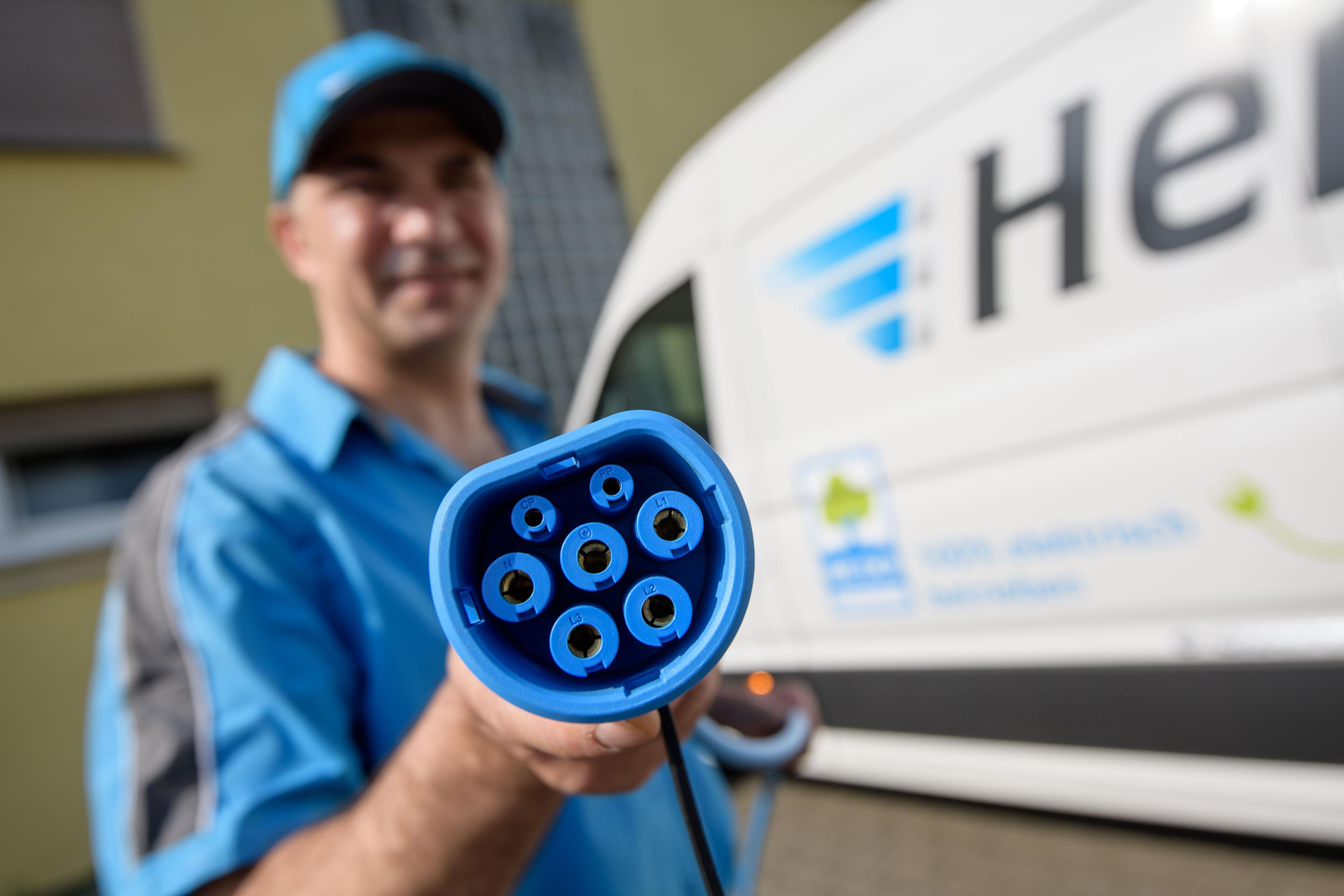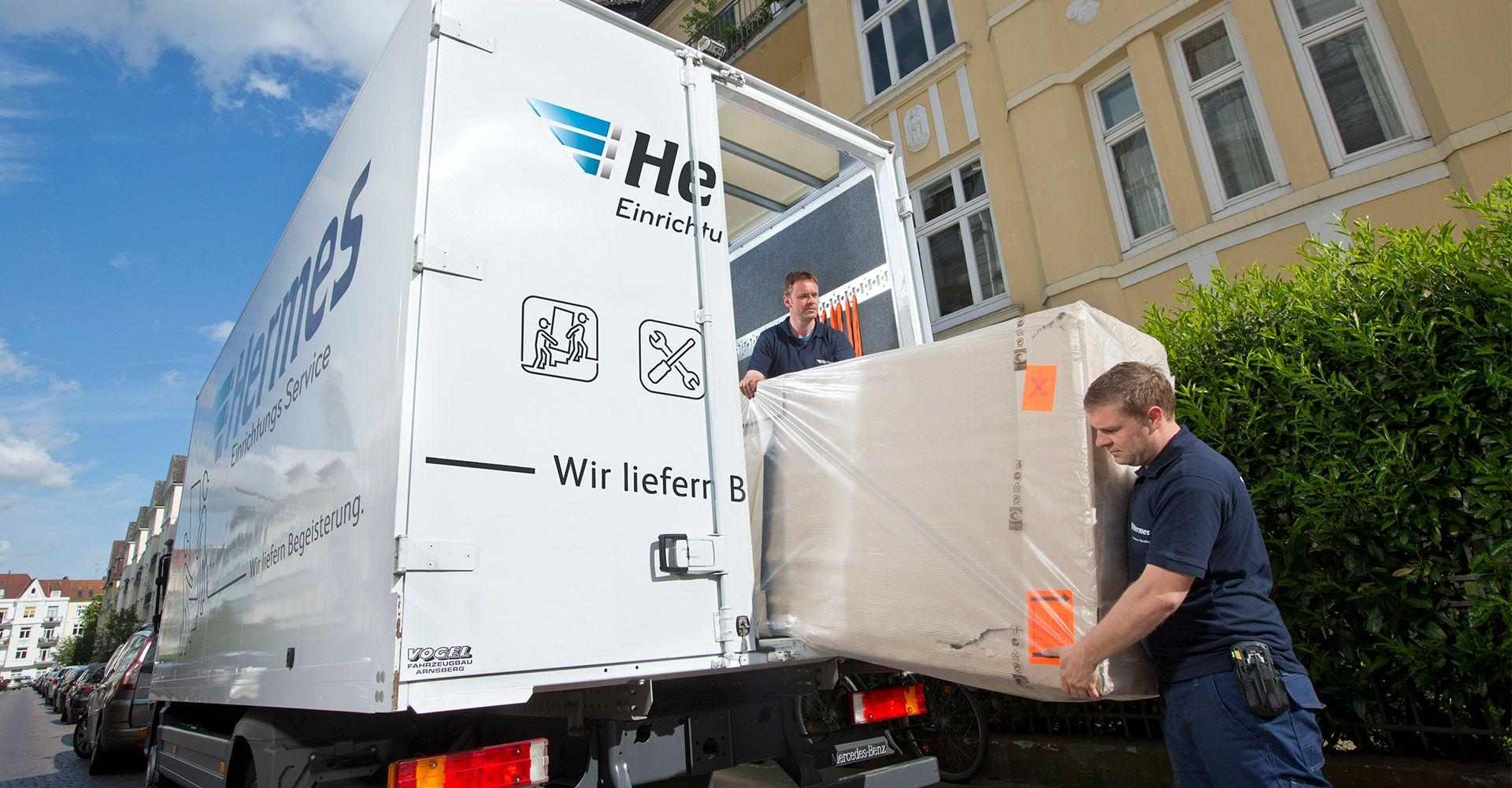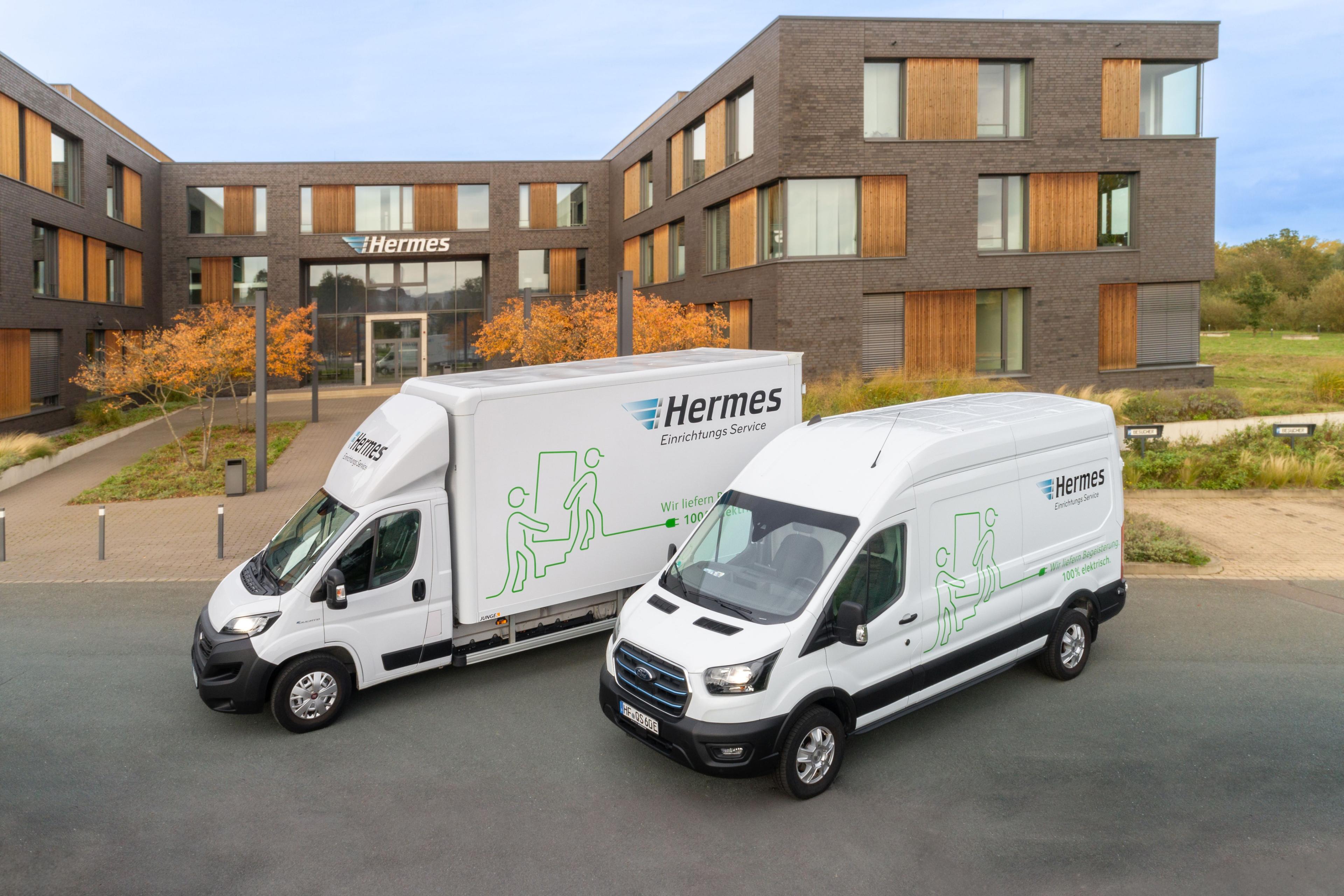Together, we are implementing an efficient charging infrastructure for emission-free deliveries and working closely with HES depot partners to drive forward the gradual expansion of e-mobility.
Clear signals for green logistics
Hermes Einrichtungs Service (HES) is an independent subsidiary of the Otto Group. The two-man teams deliver furniture, large electrical appliances, and other heavy or bulky goods to end customers. HES is the market leader in two-man handling in Germany and is now focusing on sustainable mobility. In view of the foreseeable ban on combustion vehicles in German city centers, the switch to e-mobility is essential. The company is investing around €16 million in electric mobility by 2030 in order to deliver the last mile in Germany's 80 biggest cities largely emission-free by 2030. This contributes to the Otto Group's sustainability strategy, which aims to achieve net zero emissions in the value chain by 2045.
"We don't just want to follow the trend toward green logistics; we want to be a driving force in its development."
Viviane Reichert-Brown,
Managing Director at HES
First steps: HES explores electric vehicles and plans charging infrastructure
The analysis of different vehicles from various manufacturers demonstrated the versatile potential of electric mobility, but also the need for a comprehensive charging infrastructure and high-performance charging options at depots. HES therefore searched for an experienced partner and approached us on recommendation. However, no final decision on a provider was made at this stage. At the same time, we carried out the first site inspections at 24 depots in order to be able to expertly assess the possible number, type, and distribution of charging stations. On this basis, we prepared a cost-efficient implementation proposal that ultimately convinced the logistics service provider.
"Despite further tests with other providers, The Mobility House Solutions ultimately won us over with their offer and the expertise of their employees."
Tobias Gruschka,
Project Lead E-Mobility at HES
Based on various criteria such as proximity to cities, technical conditions, and high shipment volumes, flagship projects were ultimately identified at five depots, including the Berlin location. The conversion process kicked off at the Spandau depot in early April 2024.
Transformation process of vehicle fleet and mindset for sustainable logistics
The transformation also poses challenges, particularly in terms of cooperation with subcontractors and the complex restructuring of last-mile logistics.
Another hurdle was the insufficient grid connection capacity of the Berlin depot, which was inadequate despite load management. Our partner Elektro Jahn worked closely with the responsible network operator Stromnetz Berlin to apply for and install a new connection. Appropriate supply lines for power transmission from the grid connection and the transformer station were laid at the depot. This new connection now enables a secure supply for the electric vehicles and paves the way for additional expansions. In urban areas such as Berlin, daily trips of 80 to 90 kilometers are no problem for electric vehicles. In rural areas, in contrast, longer distances of over 300 kilometers pose a challenge. However, the switch to electric vehicles in rural depots is also to be pushed ahead. Plans to cope with these distances are already in the works.
Working together to expand the charging infrastructure
In order to be able to cover longer distances in the future, we already took the need for fast charging stations into account when checking the location. In addition, an adjustment of the routes in more distant depots is being considered: for example, first a tour in the surrounding area, then return to the depot, loading the vehicles with new goods, and recharging the batteries. This allows for an additional range of about 100 kilometers and enables longer distances to be covered.
Thanks to the new transformer station in Berlin, HES now also has sufficient power to continuously operate the first 24 charging points at 22 kW. An additional 20 charging stations could be connected without any problems. This way, HES is ideally positioned for the future. The new grid connection provides sufficient power, allowing HES to rely on static load management for the time being. This means that the electric vehicles charge constantly at 22 kW. In the future, however, our smart load and energy management system ChargePilot® will make it easy to switch to dynamic or schedule-based charging. This is advantageous in the long term, as it enables the integration of the PV system and other consumers, such as sorting systems or the on-site carpentry workshop. In addition, the stored driving profiles with departure times and energy requirements of the individual electric vehicles can be taken into account, so that electric vehicles are prioritized in charging that need to be ready for use again sooner than others.
Sustainable solutions in all areas of logistics processes
The implementation in Berlin took about a year before the first wall boxes were installed in the depot in Spandau – which means that the project duration was quite short.
"Starting in June, the fully electric commercial vehicles that are already available today will be charged using a future-proof charging infrastructure."
Andreas Schmidt,
Head of Corporate Responsibility at HES
HES also plans to install PV systems on the roofs of its depots in order to achieve a clean footprint in the long term. Green electricity contracts are already in place at all locations. At the same time, the conversion began at the Kassel site. Another 24 charging points are also planned in Hamburg.
HES is also satisfied with the appropriate billing solution. Based on their precise vision and requirements, a third-party system was selected. Thanks to the open interfaces of our ChargePilot®, the system was easily integrated.
"I now also count The Mobility House Solutions as part of my team, as they do important work and support us in the entire implementation of the charging infrastructure project. They look to the future and are leaders in bidirectional charging. This allows vehicles to compensate for power shortages and enables us to feed electricity into the grid or draw it from it at favorable times. We have found exactly the right partner in The Mobility House Solutions."
Tobias Gruschka,
Project Lead E-Mobility beim HES



